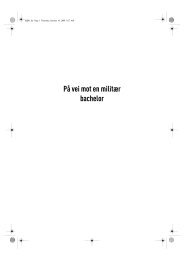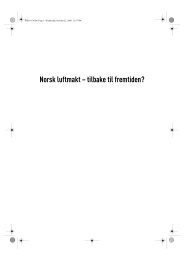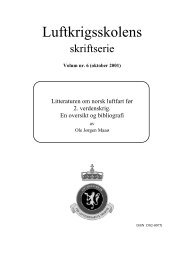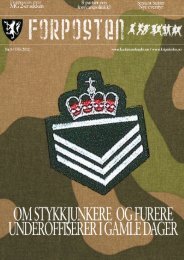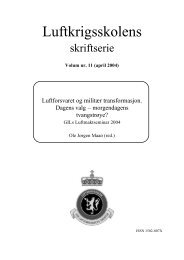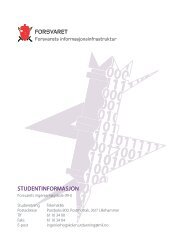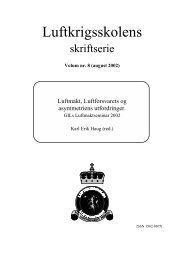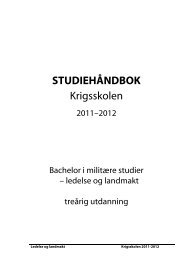Wilhelm Mohr
Wilhelm Mohr
Wilhelm Mohr
You also want an ePaper? Increase the reach of your titles
YUMPU automatically turns print PDFs into web optimized ePapers that Google loves.
PART I – The Contribution of the Norwegian Air Forces<br />
The Catalinas<br />
In accordance with Norwegian ambitions a unit of seaplanes was<br />
desired to operate along the coastlines and in the fiords, transporting<br />
personnel, picking up saboteurs, doing reconnaissance, and making<br />
attacks on shipping and submarines. The idea was supported by Coastal<br />
Command, but was initially held back by the Air Ministry until 8 February<br />
1942 when the «Norwegian Detachment» of RAF 210 Squadron<br />
was based at Woodhaven by the Firth of Tay near Dundee. The element<br />
operated Catalina flying boats. After a year of operations and in recognition<br />
of its valuable special operations, the detachment was singled out<br />
on 1 january 1943 as a separate 1477 (Norwegian) Flight. It consisted<br />
of 3 Catalinas with Norwegian aircrew and servicing personnel.<br />
The Mosquitos<br />
Ever since autumn 1940 the Norwegian Air Forces HQ had pressed for<br />
the capability to attack targets along the Norwegian coast and inside<br />
Norway. The opportunity came when Costal Command supported the<br />
use of Norwegian aircrew for such tasks. In April 1943 five Mosquitos<br />
were made available on loan, plus additional aircraft for training purposes.<br />
On the addition of another Mosquito, a separate flight was<br />
formed alongside that of the Catalina flight.<br />
By 10 may 1943 the two flights became the 333 (Norwegian) Squadron,<br />
operationally under No. 18 Group of Costal Command. The Mosquito<br />
operating base was RAF Station Leuchars, while the Catalinas<br />
remained at Woodhaven. The squadron strength was 30 officers, 70<br />
quartermasters, and 150 rated personnel including 11 women.<br />
Both flights were very active. The Catalinas provided a valuable<br />
means of communications to and from Norway. They also carried<br />
out anti-submarine operations, as did 330 and other Costal Command<br />
squadrons, in the sea area between the Faeroe Islands and Iceland, called<br />
«Rosengarten» by the Germans. Because of the performance of the<br />
Mosquitos and the use of surprise, various new tasks were made possible.<br />
It became evident, however, that the required training for conversion<br />
to the Mosquito had been based rather too much on Norwegian<br />
63



